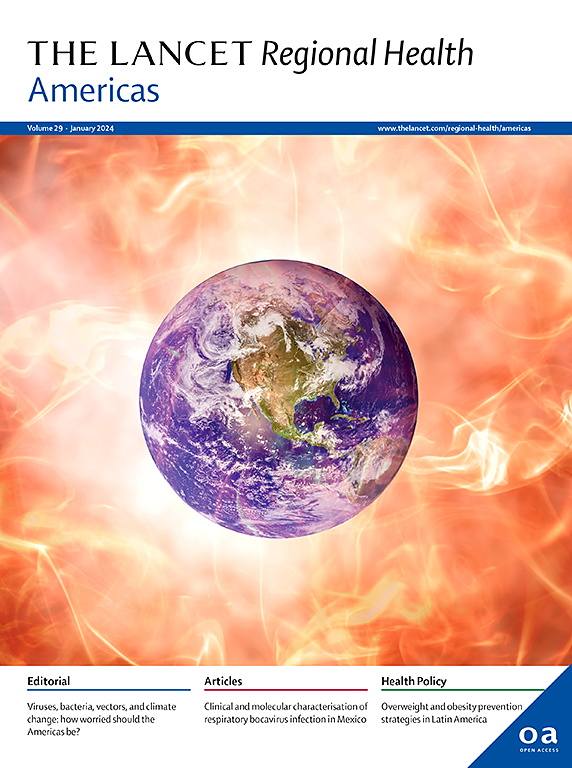Descriptive epidemiology of gastric cancer in Costa Rica from 1990 to 2022 and projection of deaths to 2050: a population-based study
IF 7
Q1 HEALTH CARE SCIENCES & SERVICES
引用次数: 0
Abstract
Background
In Costa Rica, gastric cancer has been the leading cause of cancer death (both sexes) since the 1980s. The objective of this study was to analyze the incidence, mortality, and geographic distribution of stomach cancer in Costa Rica for the period 1990–2022, and to make projections of deaths up to 2050.
Methods
Incidence and mortality data were from the Costa Rican National Cancer Registry, the Costa Rican National Institute of Statistics and Census, and the Central American Population Research Center. Age-standardized incidence and mortality rates, annual percent changes (APC), and years of potential life lost (YPLL) were calculated. Crude mortality rates were estimated at the canton level. Mortality projections were made using Poisson models.
Findings
The standardized rates have been decreasing in all ages over 40 years old, in men and in women (in incidence, APC = −4.4% [−4.6, −4.3] in men, APC = −3.6% [−3.8, −3.3] in women; in mortality APC = −3.5% [−3.7, −3.4] in men, APC = −3.0% [−3.3, −2.8] in women). YPLL rates increased with age, but the age group with the highest number of YPLL was between 50 and 69 years. High mortality rates were observed in the mountainous areas east and south of the capital region, and one canton in Guanacaste. Most models projected increases in number of deaths of 50%–200% by the year 2050.
Interpretation
Despite declining mortality rates, the number of gastric cancer deaths is projected to rise, underscoring the need for targeted public health strategies-particularly programs for Helicobacter pylori detection and eradication, along with dietary and lifestyle interventions. Geographic disparities also support the development of region-specific cancer control strategies to reduce the burden in high-risk areas.
Funding
The study was supported by the Agencia Costarricense de Investigaciones Biomédicas—Fundación INCIENSA.
1990年至2022年哥斯达黎加胃癌描述性流行病学和2050年死亡预测:一项基于人群的研究
在哥斯达黎加,自20世纪80年代以来,胃癌一直是癌症死亡(男女)的主要原因。本研究的目的是分析1990-2022年期间哥斯达黎加胃癌的发病率、死亡率和地理分布,并预测到2050年的死亡人数。方法发病率和死亡率数据来自哥斯达黎加国家癌症登记处、哥斯达黎加国家统计和人口普查研究所和中美洲人口研究中心。计算年龄标准化发病率和死亡率、年变化百分比(APC)和潜在生命损失年数(YPLL)。在州一级估计了粗死亡率。死亡率预测使用泊松模型。结果:40岁以上男性和女性的标准化率均呈下降趋势(发病率方面,男性APC = - 4.4%[- 4.6, - 4.3],女性APC = - 3.6% [- 3.8, - 3.3];死亡率APC =−3.5%(−3.7−3.4)男性,APC =−3.0%女性(−3.3−2.8))。YPLL发病率随年龄增长而增加,但以50 ~ 69岁年龄组发生率最高。在首都地区东部和南部的山区以及瓜纳卡斯特的一个州观察到高死亡率。大多数模型预测,到2050年,死亡人数将增加50%-200%。尽管死亡率下降,但胃癌死亡人数预计将上升,强调需要有针对性的公共卫生策略-特别是幽门螺杆菌检测和根除计划,以及饮食和生活方式干预。地域差异也有助于制定针对特定区域的癌症控制战略,以减轻高风险地区的负担。该研究得到了Costarricense de Investigaciones Biomédicas-Fundación incisa机构的支持。
本文章由计算机程序翻译,如有差异,请以英文原文为准。
求助全文
约1分钟内获得全文
求助全文
来源期刊

Lancet Regional Health-Americas
Multiple-
CiteScore
8.00
自引率
0.00%
发文量
0
期刊介绍:
The Lancet Regional Health – Americas, an open-access journal, contributes to The Lancet's global initiative by focusing on health-care quality and access in the Americas. It aims to advance clinical practice and health policy in the region, promoting better health outcomes. The journal publishes high-quality original research advocating change or shedding light on clinical practice and health policy. It welcomes submissions on various regional health topics, including infectious diseases, non-communicable diseases, child and adolescent health, maternal and reproductive health, emergency care, health policy, and health equity.
 求助内容:
求助内容: 应助结果提醒方式:
应助结果提醒方式:


